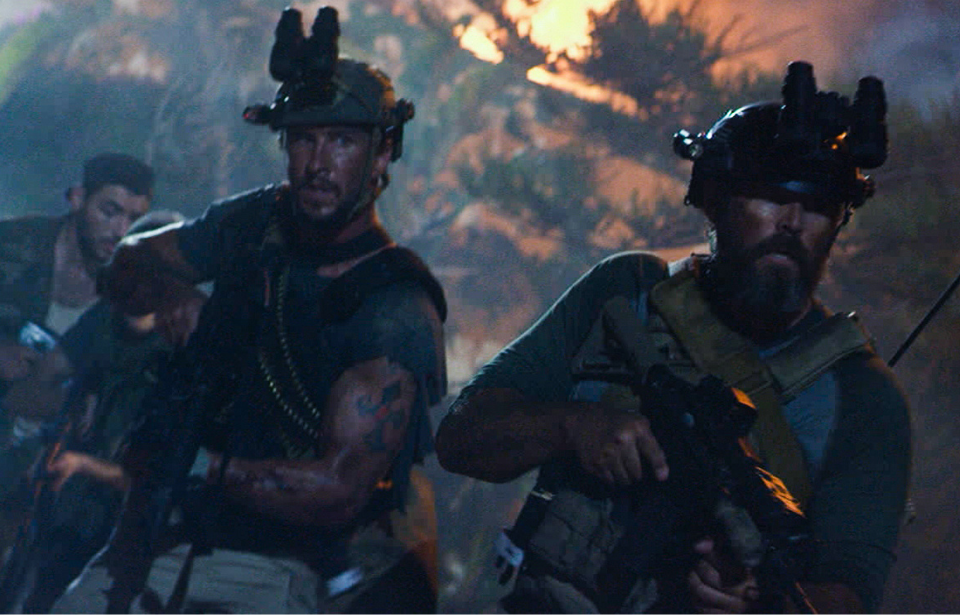The 2012 Benghazi attack occurred on the anniversary of September 11th. While the nation was commemorating one of its darkest days, militants launched an assault on the US diplomatic compound in Libya, where the American ambassador was visiting. The attack was swift and deadly, and when it subsided the following day, four US nationals were dead and government officials were calling for answers.
In 2016, 13 Hours: The Secret Soldiers of Benghazi premiered in theaters. It aimed to depict what had occurred, but how accurate was it? The following is the true story behind the Michael Bay action flick.
13 Hours: The Secret Soldiers of Benghazi (2016)
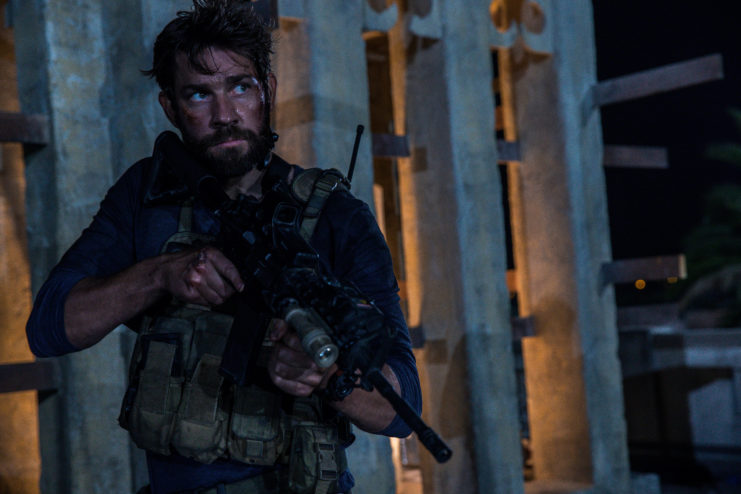
13 Hours: The Secret Soldiers of Benghazi is about the 2012 Benghazi attack, which saw Ansar al-Sharia militants attack the US diplomatic compound and the CIA‘s Annex in the Libyan city. Backed by Paramount Pictures, it starred John Krasinski, James Badge Dale, David Denman, Max Martini, Dominic Fumusa and Pablo Schreiber.
The movie follows a team of six with the Global Response Staff (GRS) – former US Navy SEALs Jack Silva, Tyrone “Rone” Woods, former US Army Ranger Kris “Tanto” Paronto, and former US Marines John “Tig” Tiegen, Mark “Oz” Geist and Dave “Boon” Benton – as they work to repel the attack, although initial prevented from doing so by the CIA chief stationed at the Annex, where they’re based.
Going against the CIA chief’s orders, the men descend upon the diplomatic compound, where, on the 11th anniversary of the September 11th attacks, they engage in a firefight with the militants. US ambassador J. Christopher Stevens is killed at the compound, along with another, when the militants set the compound ablaze.
The film shows the GRS team making numerous calls for help, the majority of which go unanswered. Former Navy SEAL Glen “Bub” Doherty” is among the only ones to rush to their aid, alongside two Delta Force operators. As the fighting moves to the Annex, Woods and Doherty also lose their lives.
13 Hours: The Secret Soldiers of Benghazi was released in theaters on January 15, 2016, and while it was praised for its action scenes and its stars’ acting abilities, the script was criticized for taking historical liberties, which produced inaccuracies. It also wasn’t a hit, earning just $69.4 million at the worldwide box office – just a smidge over its $50 million budget.
Unrest in Libya grows following the 2011 Civil War
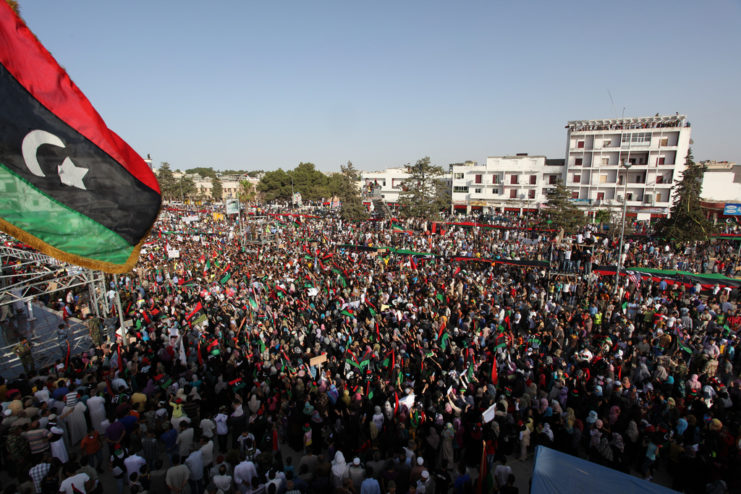
The US hadn’t had a solid diplomatic presence in Libya since the 1970s, when it withdrew its ambassador and shuttered its embassy. It took decades for officials to once again begin working toward normalizing relations between the two countries.
The Libyan Civil War broke out in February 2011, and saw rebel groups take on those loyal to de facto leader Muammar Gaddafi, with the aim of removing him from power. Just months into the conflict, the CIA began covert operations within the country. Benghazi was where they conducted the majority of their missions. J. Christopher Stevens was appointed as the first liaison to the opposition in March 2011, and a year later was officially named the US ambassador to Libya.
When the civil war came to an end, the CIA and US Department of State worked together to collect the arms that had found their way into Libya during the conflict, including chemical weapons and shoulder-fired missiles. They also took on the task of training the country’s new intelligence agency. The latter primarily occurred in Benghazi and Eastern Libya.
Unrest began to rise in April 2012, with a number of attacks against high-profile individuals. Among these incidents was the attempted assassination of British ambassador Dominic Asquith, which saw his convoy hit by a rocket-propelled grenade (RPG). The number of violent attacks only grew as the years went on.
Militants launch an attack on the US diplomatic compound
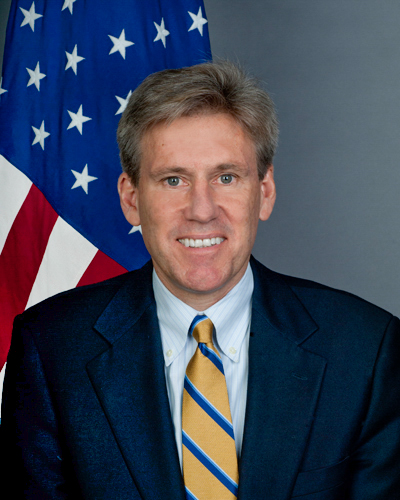
Prior to the 2012 Benghazi attack, it was reported that 35 US personnel were stationed at the diplomatic compound, 21 of whom were CIA operatives. J. Christopher Stevens wasn’t typically among them, as he was positioned in the Libyan capital of Tripoli.
However, Stevens and agents with the Diplomatic Security Service (DSS) had been visiting on the day of the attack. Not only was he there to review plans to modernize a local hospital and construct a new cultural center, he also “needed to [prepare a] report […] on the physical and the political and security environment in Benghazi to support an action memo to convert Benghazi from a temporary facility to a permanent facility.”
At approximately 9:42PM on September 11, 2012, 150 Ansar al-Sharia militants launched an attack on the compound, throwing grenades over the walls and entering the premises with handheld firearms, automatic weapons and RPGs.
Immediately, a DSS agent grabbed Stevens and US Foreign Service Information Management Officer Sean Patrick Smith and secured them in a safe haven within the building. Unable to enter the room, the militants poured diesel fuel around the entrance and set it ablaze. While the DSS agent was able to escape, Smith and Stevens didn’t survive.
Two attacks on the the Annex
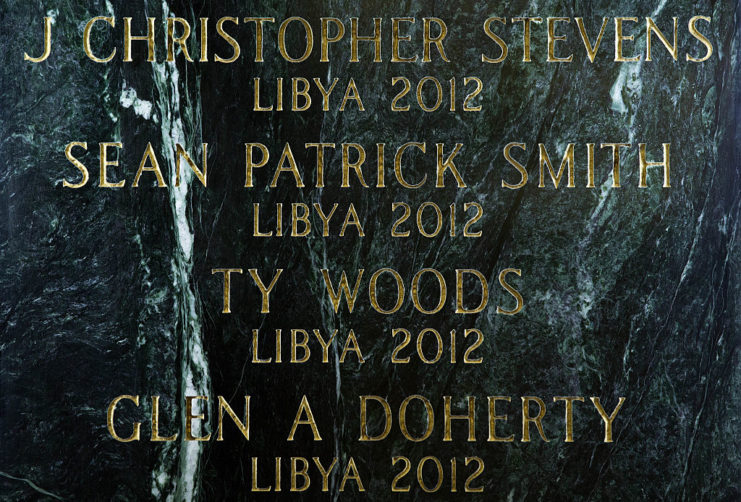
The Global Response Staff team began making their way to the diplomatic compound and attempted to put a stop to the attack. On their way back to the Annex, their armored vehicle fell victim to enemy AK-47 fire, and while it managed to make it back, it suffered two flat tires.
Not long after they were safely back at the Annex, the GRS team came under mortar, machine gun and rocket fire. They were able to hold off the attack until just after 5:00AM the next morning, at which point the rocket and mortar fire increased. Glen Doherty and Tyrone Woods died as a result of the enemy action.
When the attack subsided, four US nationals had died – Woods, Doherty, J. Christopher Stevens and Sean Patrick Smith. Their bodies were transported to Benina International Airport and flown to Tripoli, after which they were taken to Ramstein Air Base, Germany aboard a Boeing C-17 Globemaster III. They were subsequently returned to the US, where a service was held at Joint Base Andrews, Maryland.
An additional 30 US personnel were evacuated from Benghazi, with all non-essential workers being flown out of Libya altogether. Those needed in the country were moved to Tripoli. It was later discovered that a number of sensitive documents were missing, including lists of American officials in Libya and oil contracts.
US response to the 2012 Benghazi attack
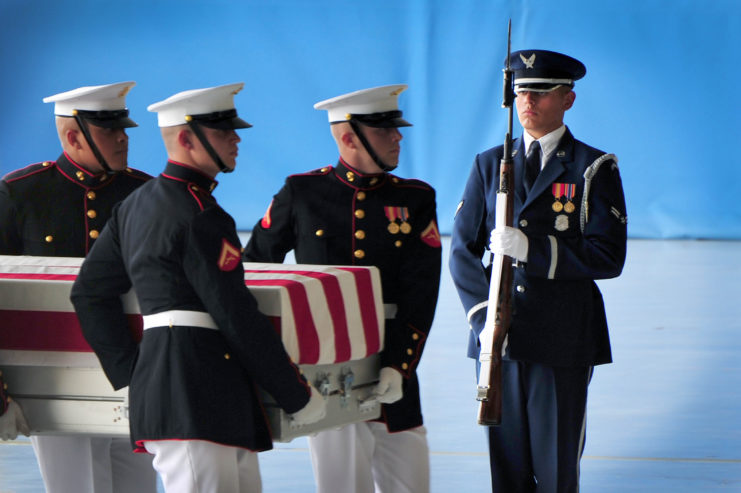
Immediately following the 2012 Benghazi attack, security at American diplomatic centers was increased. The Libyan government condemned the militants’ actions and began steps to disband the country’s militias. On top of this, tens of thousands of Libyan civilians marched through Benghazi to denounce the attack and Ansar al-Sharia.
Upon hearing about the incident, US President Barack Obama issued a number of statements, saying, “The United States condemns in the strongest terms this outrageous and shocking attack […] No acts of terror will ever shake the resolve of this nation.”
A number of government investigations were held into the attack. At first, it was believed it was the result of a video that poked fun at Islam. However, the investigations found it had been planned. They also concluded there were several bureaucratic failures that led to the US being ill-prepared to prevent and respond to such an assault.
Just under a year after the attack on the diplomatic compound, criminal charges were filed against those involved, including Ahmed Abu Khattala, the militia leader. He was captured the following year through a joint effort by the FBI and US Army Special Forces. As well, in January 2014, the US government named Ansar al-Sharia a terrorist organization.
Just over a decade after the 2012 Benghazi attack, US President Joe Biden signed into law H.R. 310, which posthumously awarded the Congressional Gold Medal to Tyrone Woods, J. Christopher Stevens, Glen Doherty and Sean Patrick Smith.
What did 13 Hours: The Secret Soldiers of Benghazi get wrong?
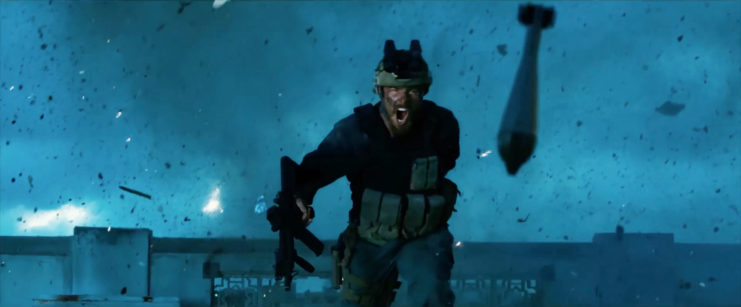
As aforementioned, 13 Hours: The Secret Soldiers of Benghazi was criticized for taking historical liberties when it came to the 2012 attack.
Many Libyans were angered by how the film failed to present the efforts of civilians and the country’s forces in attempting to save J. Christopher Stevens. As well, it incorrectly stated that airborne assistance had been denied to the Global Response Staff team. In reality, it was found that such support was either unavailable or wouldn’t have shown up in time to have made a difference.
More from us: British Troops Were Ordered to Break Out Their Fixed Bayonets During the Iraq War
The part of the film that caused the most controversy was the insinuation that the CIA chief in Benghazi had told the GRS team to stand down when they asked permission to fight the militants at the US diplomatic compound. While the real-life chief later came out and said that he hadn’t actually denied the men their chance to assist, multiple sources have since refuted this claim, leaving the entire situation muddled.
